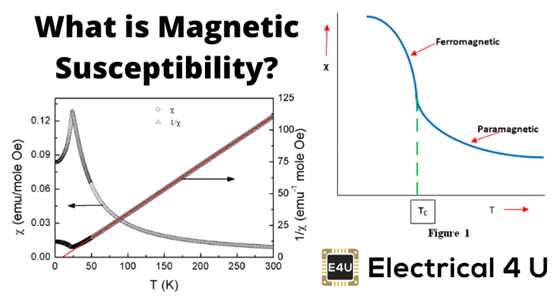You simply need to know - Basics
The shape anisotropy is a phenomenon associated with the zeroth spatial order of the magnetization field and it has great advantage in aligning......
The shape anisotropy is a phenomenon associated with the zeroth spatial order of the magnetization field and it has great advantage in aligning the magnetic axis of the particles with respect to the surface during self-assembly into high quality 2D and 3D arrays. In magnetic material, the need for elongated structures (shape anisotropy) is paramount and even small deviations from spherical shapes can significantly alter the coericivity. It is known that not only size but the shape of the metal nanoparticles also influences the energy spectrum, surface charge density, colloidal stability and magnetic properties of the materials. In this paper, we study the effect of shape anisotropy in cobalt nanocubes using static and dynamic magnetic properties at various temperatures. The shape anisotropy was introduced in the form of nanodiscs by using a linear chain amine surfactant in the growth process. The variations in particle size and shape induced predominant changes in the magnetic behaviour of nanocubes. We observed the persistence of ferromagnetism above room temperature. Larger coercive field and RF transverse susceptibility ratio’s were measured and have been correlated with the shape anisotropy present in nanocubes.
The soft magnetic materials can be simply magnetised and demagnetised. This is because only small energy is needed for the same. These materials......
The soft magnetic materials can be simply magnetised and demagnetised. This is because only small energy is needed for the same. These materials have coercive field very small which is less than 1000A/m. The domain growth of these materials can be easily realised. They are mainly used to increase the flux or/and to make a way for the flux created by the electric current.
The main parameters used to worth or consider the soft magnetic materials are permeability (used to determine how a material reacts to the applied magnetic field), Coercive force (which already discussed), electrical conductivity (the capability of the substance to conduct electric current) and saturation magnetization (utmost quantity of magnetic field that a material can generate).
Properties of Soft Magnetic Materials
Utmost permeability. Slight coercive force. Small hysteresis loss. Small remanent induction. High saturation magnetisation. Some of the significant soft magnetic materials are the following: Pure Iron: Pure iron contain a very minute carbon content (> 0.1%).
This material can be refined to get the utmost permeability and less coercive force with the help of suitable technique to make it a soft magnetic material. But it produces eddy current loss when subjected to very high flux density due to low resistivity. So, it is used in low frequency application such as components for electrical instruments and core in electromagnet. Silicon Iron Alloys This material is most commonly used soft magnetic material. The addition of silicon will make increase in permeability, low eddy current loss due to increase in resistivity, low hysteresis loss. They are used in electrical rotating machine, electromagnet, electrical machine and transformer. Nickel Iron Alloys It is used in communication equipment such as audio transformer, recording heads and magnetic modulators because of high initial permeability in feeble fields. They also possess low hysteresis and eddy current losses. Grain oriented sheet steel: used to make transformer cores. Mu-metal: used in miniature transformers meant for circuit applications. Ceramic magnets: used for making memory devices for microwave devices and computer.
Magnetic susceptibility, quantitative measure of the extent to which a material may be magnetized in relation to a given applied magnetic field. The magnetic susceptibility......
Magnetic susceptibility, quantitative measure of the extent to which a material may be magnetized in relation to a given applied magnetic field. The magnetic susceptibility of a material, commonly symbolized by χm, is equal to the ratio of the magnetization M within the material to the applied magnetic field strength H, or χm = M/H. This ratio, strictly speaking, is the volume susceptibility, because magnetization essentially involves a certain measure of magnetism (dipole moment) per unit volume.
Magnetic materials may be classified as diamagnetic, paramagnetic, or ferromagnetic on the basis of their susceptibilities. Diamagnetic materials, such as bismuth, when placed in an external magnetic field, partly expel the external field from within themselves and, if shaped like a rod, line up at right angles to a nonuniform magnetic field. Diamagnetic materials are characterized by constant, small negative susceptibilities, only slightly affected by changes in temperature.
Paramagnetic materials, such as platinum, increase a magnetic field in which they are placed because their atoms have small magnetic dipole moments that partly line up with the external field. Paramagnetic materials have constant, small positive susceptibilities, less than 1/1,000 at room temperature, which means that the enhancement of the magnetic field caused by the alignment of magnetic dipoles is relatively small compared with the applied field. Paramagnetic susceptibility is inversely proportional to the value of the absolute temperature. Temperature increases cause greater thermal vibration of atoms, which interferes with alignment of magnetic dipoles.
Ferromagnetic materials, such as iron and cobalt, do not have constant susceptibilities; the magnetization is not usually proportional to the applied field strength. Measured ferromagnetic susceptibilities have relatively large positive values, sometimes in excess of 1,000. Thus, within ferromagnetic materials, the magnetization may be more than 1,000 times larger than the external magnetizing field, because such materials are composed of highly magnetized clusters of atomic magnets (ferromagnetic domains) that are more easily lined up by the external field.
